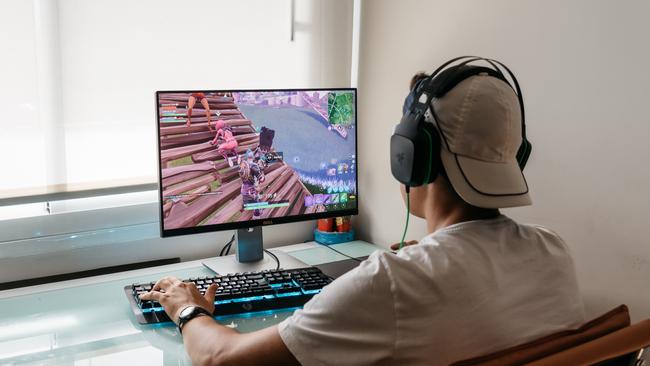Australia launches new classification system for online games
The federal government will impose an M rating on kids’ online games that have hidden costs.

Online games will be slapped with an M rating if they contain “loot boxes’’, in a censorship change to stop corporations cashing in on kids’ pocket money.
The Australian Classifications Board has updated its guidelines for classifying video games, to help families detect which games have hidden costs.
Under the new system, video games with in-game purchases linked to elements of chance – such as paid “loot boxes’’ – will receive an M rating for mature audiences.
Games that contain simulated gambling, such as casino-style mechanics or in-game betting, will receive an R18+ rating, restricting them to adults.

The new rules will not apply to existing games, such as the blockbuster Fortnite or Roblox, until they are updated with new content.
Classification Board director Steven Thomson said that exposure to gambling-like content in children’s games could normalise gambling behaviour in children.
“These new classifications aim to give parents and carers the information they need to help reduce the risk of children being exposed to gambling harms throughout their life,’’ Mr Thomson said.
The new M rating may spare parents from the “bill shock’’ when children deliberately or inadvertently spend hundreds of dollars to buy costumes, known as “skins’’, tools, treasures or accessories to use in online games.
The Australian Institute of Family Studies reported in 2022 that Australian teenagers spent between $10 and $70 per month on loot boxes, citing data from the NSW Youth Gambling Study.
The Office of the eSafety Commissioner has found that one in three children make in-game purchases.
The Classification Board warned parents to check if their credit card details were saved to devices children use for gaming.
“Some devices, app stores and games allow credit card details to be saved for convenience,’’ it said. “This means that your children could make purchases on your device, or their own devices, using saved card details without your permission.
“If you are concerned about your children making purchases without your permission, you may want to consider removing saved credit card details from devices or consoles’’.







To join the conversation, please log in. Don't have an account? Register
Join the conversation, you are commenting as Logout